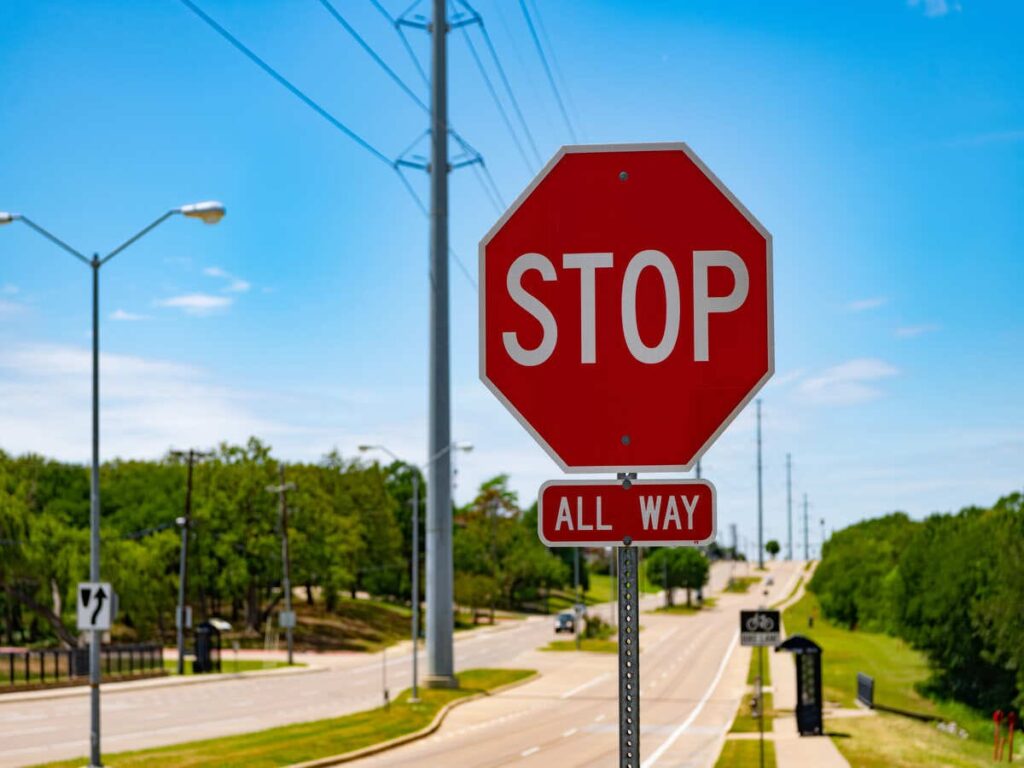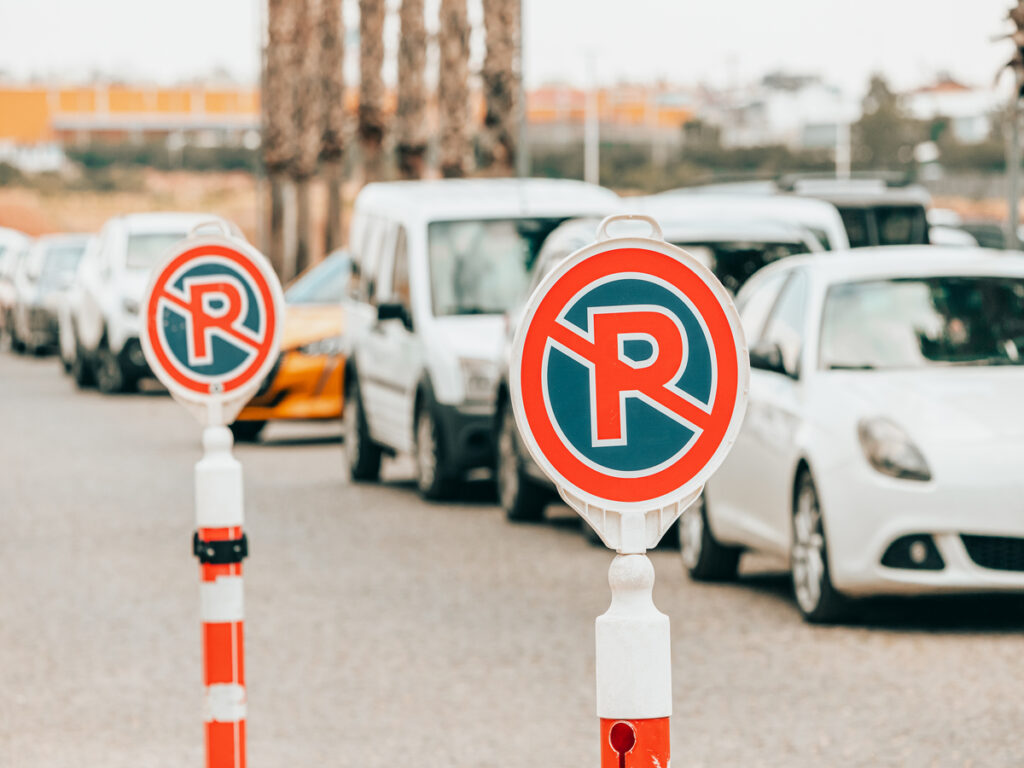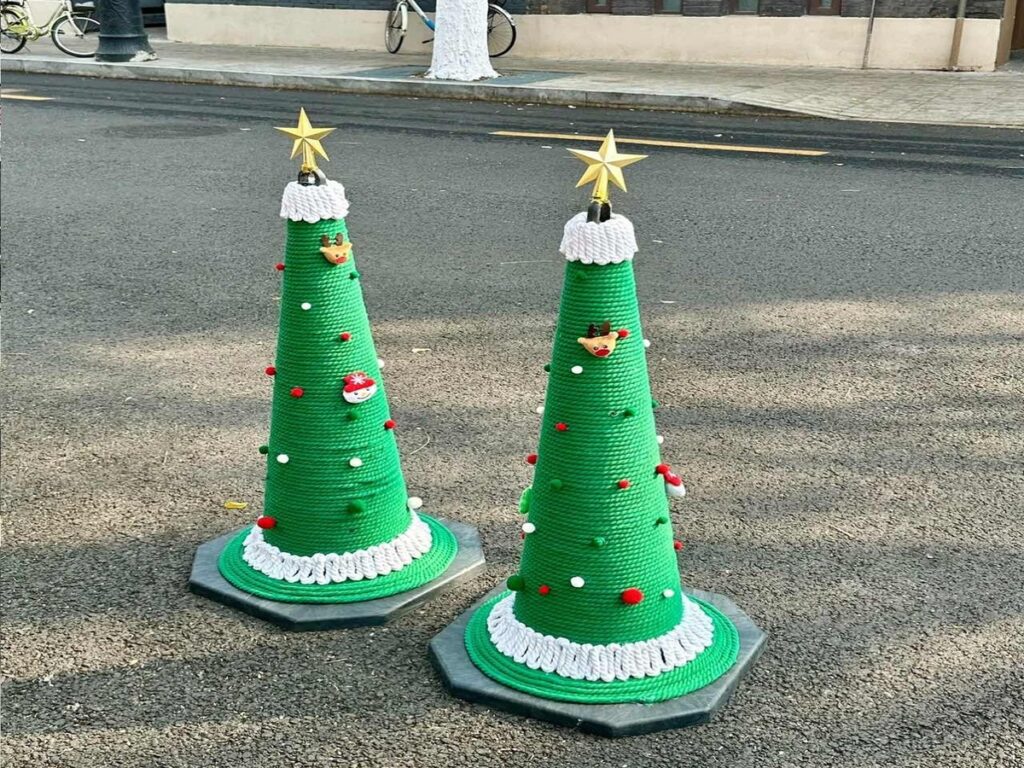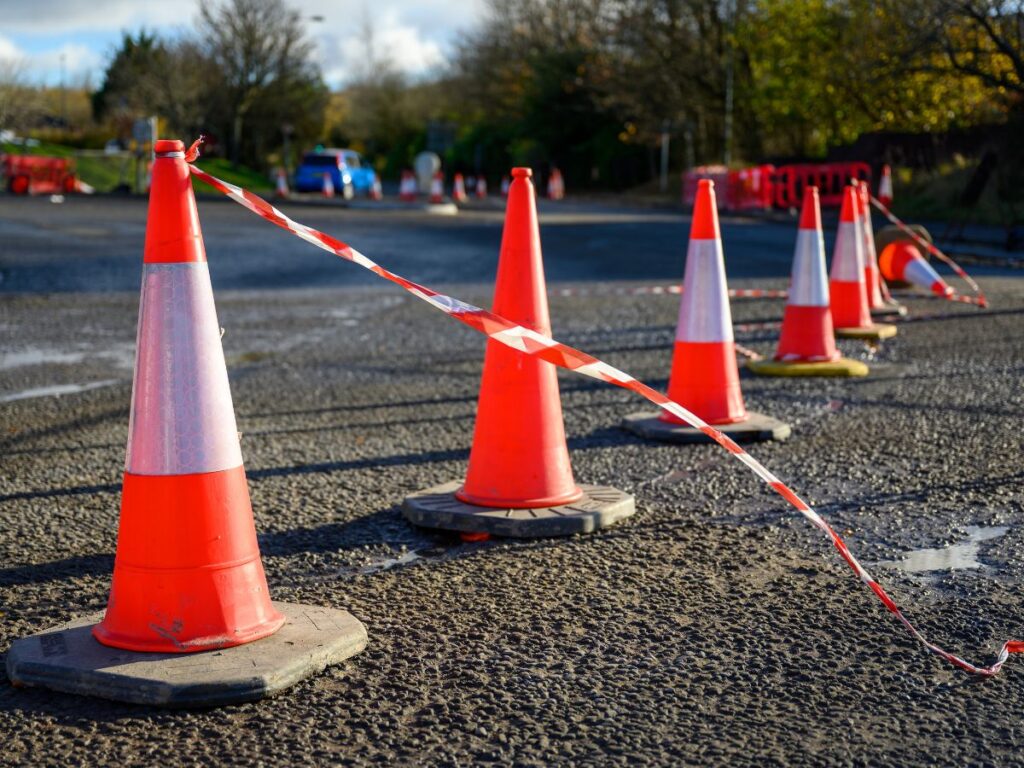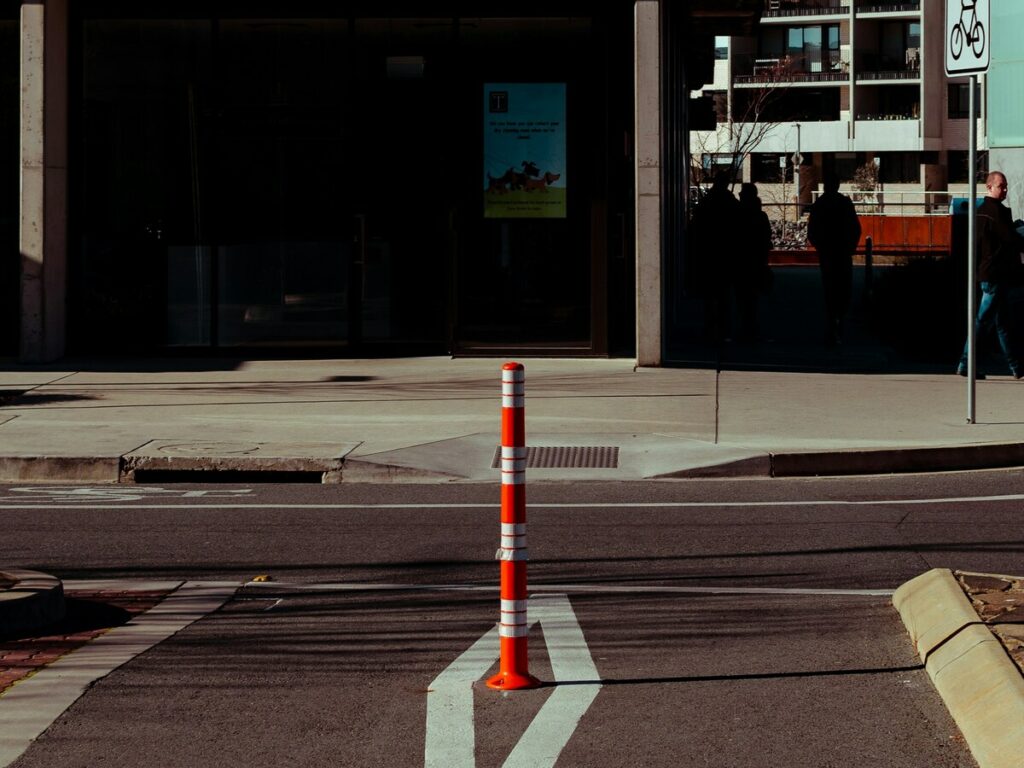
Ao gerenciar o tráfego ou garantir a segurança, Você precisa de ferramentas confiáveis para orientar veículos e pedestres de maneira eficaz. Delineadores e cones de tráfego são dois dispositivos essenciais de controle de tráfego, Cada serve para propósitos únicos. Um cone delineador oferece orientação e durabilidade a longo prazo, tornando -o ideal para aplicações fixas. Por outro lado, Cones de trânsito se destacam em configurações temporárias devido à sua portabilidade. Ambas as ferramentas aprimoram a visibilidade e complementam a sinalização para criar ambientes mais seguros. Escolher a opção certa depende de suas necessidades específicas, seja para zonas de construção, Gerenciamento de eventos, ou situações de emergência.
Compreendendo os delineadores

O que são delineadores?
Definição de delineadores
Delineadores são dispositivos verticais de canalização de tráfego projetados para guiar veículos e pedestres marcando limites ou caminhos. Essas ferramentas são essenciais para manter a ordem e garantir a segurança nos diversos cenários de trânsito. Ao contrário dos cones de segurança no trânsito, delineadores são mais duráveis e frequentemente usados para aplicações de longo prazo.
Principais características dos delineadores
Os delineadores se destacam por suas características únicas, o que os torna dispositivos de controle de tráfego confiáveis:
- Altura: Os delineadores normalmente variam de 28 para 36 polegadas, proporcionando excelente visibilidade.
- Material: Os fabricantes usam materiais duráveis como PVC, polietileno de alta densidade, e metal. Esses materiais garantem flexibilidade e resistência às intempéries e ao impacto.
- Refletividade: Folhas refletivas de alto desempenho, incluindo opções de grau de diamante, aumenta a visibilidade em condições de pouca luz.
- Tipos básicos: Options include solid black bases, surface-mounted bases, e bases de policarbonato, ensuring stability in different environments.
| Tipo de delineador | Altura | Tiras reflexivas | Tipo de base |
|---|---|---|---|
| 28″ round delineator | 28″ | 2 ou 3 branco | Own base |
| 36″ round delineator | 36″ | 2 ou 3 branco | Solid black base |
| 36″ flexi-guide delineator | 36″ | Branco | Poliuretano |
| Tubular flat-top delineator | 36″ | N / D | Surface-mounted |
These features make delineators versatile and effective for various traffic control needs.
Sinais OPT delineators offer a perfect balance of affordability and quality, providing long-lasting solutions for effective traffic control. Designed for superior visibility and durability, Delineadores OPTsigns help guide vehicles safely through construction zones and traffic diversions.
Common Applications of Delineators
Long-term traffic guidance
Delineators excel in providing long-term guidance on roads and highways. Their durability and reflective properties make them ideal for marking lane boundaries and road edges. Você pode confiar neles para manter o fluxo do tráfego e reduzir a confusão em áreas de tráfego intenso.
Zonas de construção e barreiras rodoviárias
Em zonas de construção, delineadores atuam como barreiras para separar as áreas de trabalho das faixas de tráfego ativas. Seu design robusto garante que eles permaneçam no lugar, mesmo em condições adversas. Isso ajuda a proteger trabalhadores e motoristas, ao mesmo tempo que mantém o canteiro de obras organizado.
Melhorar a segurança dos pedestres
Os delineadores desempenham um papel crucial na segurança dos pedestres. Eles orientam os pedestres em cruzamentos movimentados ou em torno de áreas perigosas. Sua visibilidade, mesmo em condições climáticas com pouca luz ou adverso, garante caminhos claros e reduz o risco de acidentes. Esses produtos de segurança no trânsito são particularmente eficazes em ambientes urbanos onde o tráfego de pedestres é intenso.
Dica: A combinação de delineadores com sinalização pode aumentar ainda mais a segurança e a eficiência na gestão do tráfego.
Compreendendo os cones de trânsito
O que são cones de tráfego?
Definição de cones de trânsito
Cones de trânsito são dispositivos portáteis de canalização de tráfego projetados para gerenciar e redirecionar veículos ou pedestres. Esses cones são leves e fáceis de implantar, tornando-os ideais para necessidades temporárias de segurança no trânsito. Suas cores brilhantes e características reflexivas garantem que permaneçam visíveis em diversas condições, Melhorando a segurança geral.
Principais características dos cones de trânsito
Os cones de trânsito se destacam pela portabilidade, empilhabilidade, e visibilidade. Seu design leve permite transportá-los e implantá-los rapidamente. A maioria dos cones são empilháveis, economizando espaço durante o armazenamento. Cores brilhantes como laranja ou verde limão tornam-nos altamente visíveis durante o dia, enquanto os colares refletivos melhoram seu desempenho em condições de pouca luz.
OPTsigns cones de trânsito são construídos para oferecer visibilidade e durabilidade, fornecendo soluções confiáveis para gerenciar o tráfego em qualquer ambiente.
Comparando Delineadores e Cones de Trânsito

Durabilidade e longevidade
Diferenças materiais e vida útil
Quando se trata de durabilidade, tanto os delineadores quanto os cones de trânsito são feitos de materiais robustos como PVC e polietileno de alta densidade. Esses materiais oferecem excelente resistência ao impacto, garantindo que os produtos possam suportar uso pesado. No entanto, delineadores geralmente apresentam uma construção mais espessa, tornando-os mais adequados para aplicações de longo prazo. Cones de trânsito, enquanto durável, são projetados para uso temporário e podem não durar tanto em ambientes de alto impacto.
Resistência às intempéries e ao impacto
Ambos os dispositivos de canalização de tráfego são construídos para suportar condições climáticas extremas. Seja exposto a calor intenso, temperaturas de congelamento, ou chuva forte, eles mantêm sua estrutura e cor. Isso garante que eles permaneçam eficazes para orientar o tráfego e manter a segurança. Delineadores, com seu design mais robusto, tendem a resistir melhor aos impactos, tornando -os ideais para áreas com alta atividade de veículo.
Visibilidade e Eficácia
Propriedades reflexivas e comparação de altura
Delineadores e cones de trânsito priorizam a visibilidade. Os delineadores geralmente incluem folhas reflexivas de alto desempenho, como opções de grau de diamante, que melhoram sua visibilidade à noite. Os cones de trânsito normalmente apresentam colares ou faixas refletivas que podem ser atualizadas com fita refletiva adicional, se necessário. Em termos de altura, postes reflexivos são mais altos, tornando-os mais visíveis à distância.
Desempenho em condições de pouca luz
Ambos os dispositivos são excelentes em condições de pouca luz ou noturnas. Faixas refletivas em postes e cones refletivos refletem com eficiência os faróis dos veículos, fornecendo orientações claras aos motoristas. Delineadores, devido à sua altura e materiais reflexivos avançados, oferecem visibilidade superior em condições desafiadoras. Isso os torna uma escolha confiável para necessidades de controle de tráfego de longo prazo.
Considerações de custo
Comparação de custos iniciais
O custo inicial desses dispositivos de controle de tráfego varia de acordo com o material e o tamanho. Por exemplo, um cone de trânsito de PVC pode custar cerca de $15.43, enquanto um cone delineador como o Painel Vertical Gemstone custa aproximadamente $23.99. Cones menores, como cones esportivos coloridos, são mais acessíveis em $5.25.
Custo-efetividade a longo prazo
Embora os cones de trânsito sejam mais baratos antecipadamente, delineadores fornecem melhor valor a longo prazo. A sua durabilidade e resistência ao desgaste reduzem a necessidade de substituições frequentes. Se o seu projeto exigir uso prolongado, investir em postes reflexivos pode economizar dinheiro ao longo do tempo.
Dica: Avalie seu cenário específico de controle de tráfego para determinar se a economia inicial dos cones de trânsito ou a longevidade dos delineadores se alinha às suas necessidades.
Portabilidade e facilidade de uso
Transporte e armazenamento
Ao escolher entre delineadores e cones de trânsito, portabilidade desempenha um papel significativo. Ambas as ferramentas são projetadas para transporte rápido e fácil armazenamento, garantindo uma implantação eficiente em cenários de controle de tráfego. Os delineadores geralmente incluem alças fáceis de segurar, tornando-os simples de levantar e transportar. Seu design empilhável, com ou sem base, economiza espaço durante o armazenamento. Cones de trânsito, ao mesmo tempo que é empilhável, variam em peso e tamanho. Cones mais pesados podem exigir mais esforço para transportar, especialmente em longas distâncias.
| Recurso | Delineadores | Cones de trânsito |
|---|---|---|
| Peso | Geralmente leve | Varia por tipo |
| Empilhabilidade | Pode ser empilhado com ou sem bases | Empilhável |
| Alças | Muitas vezes inclui alças confortáveis | Pode não ter alças |
| Portabilidade | Aprimorado devido ao design | Afetado pelo peso e tamanho |
O design dessas ferramentas garante que você possa colocá-las ou recuperá-las rapidamente, reduzindo o tempo gasto em áreas potencialmente perigosas. Este recurso aumenta a segurança tanto para trabalhadores quanto para motoristas.
Tempo de configuração e desmontagem
Tanto os delineadores quanto os cones de trânsito são construídos para configuração e desmontagem rápidas. Delineadores, com suas bases robustas e construção leve, pode ser posicionado rapidamente. Cones de trânsito, devido ao seu design simples, são ainda mais rápidos de implantar. No entanto, o tempo necessário para a configuração depende do número de dispositivos necessários e da área coberta. Para projetos em larga escala, delineadores reflexivos podem demorar um pouco mais para serem organizados devido às suas bases mais pesadas.
Dica: Sempre planeje o posicionamento dessas ferramentas com antecedência para minimizar o tempo de configuração e garantir um fluxo de tráfego tranquilo.
Melhores cenários de uso
Longo prazo versus. aplicações temporárias
Os delineadores se destacam em aplicações de longo prazo. A sua durabilidade e características reflexivas tornam-nos ideais para utilização prolongada em zonas de construção ou como marcadores permanentes de faixa de rodagem.. Cones de trânsito, por outro lado, são mais adequados para necessidades temporárias. Sua portabilidade e implantação rápida os tornam perfeitos para trabalhos rodoviários de curto prazo ou gerenciamento de eventos.
Urbano, rural, e ambientes de construção
Em áreas urbanas, delineadores são eficazes para gerenciar estacionamentos, guiando pedestres, e marcação de zonas de trabalho. Suas cores brilhantes e elementos reflexivos garantem visibilidade em ruas movimentadas. Em ambientes rurais, eles ajudam a direcionar o tráfego através de desvios ou em torno de perigos. Os ambientes de construção se beneficiam muito dos delineadores devido à sua robustez e capacidade de resistir a condições adversas. Cones de trânsito, embora versátil, são mais comumente usados para tarefas temporárias, como marcar perigos ou guiar veículos durante emergências.
Observação: Para grandes eventos ou festivais, combinar delineadores e cones de trânsito pode maximizar a eficiência e a segurança.
Escolhendo a ferramenta certa para segurança
Avaliando suas necessidades de controle de tráfego
Duração de uso (temporário versus. a longo prazo)
Ao decidir entre delineadores reflexivos e cones de trânsito, considere por quanto tempo você precisa dos produtos de controle de tráfego. Para configurações temporárias, como reparos em estradas ou gerenciamento de eventos, cones de trânsito são ideais. Seu design leve e portabilidade permitem rápida implantação e remoção. Para uso a longo prazo, delineadores oferecem melhor durabilidade. Seus materiais resistentes e recursos refletivos garantem que permaneçam eficazes por longos períodos.
Os principais fatores a serem avaliados incluem:
- Visibilidade: Garanta que os motoristas possam ver os dispositivos claramente em todas as condições.
- Durabilidade: Escolha ferramentas que resistam às intempéries e ao impacto com base na duração do uso.
- Considerações de custo: Equilibre os custos iniciais com as necessidades de manutenção a longo prazo.
Tipo de ambiente (urbano, rural, canteiro de obras, etc.)
O ambiente também influencia sua escolha. Em áreas urbanas, delineadores reflexivos funcionam bem para orientar pedestres e marcar estacionamentos. Em ambientes rurais, eles ajudam a direcionar o tráfego através de desvios ou em torno de perigos. Para canteiros de obras, a sua durabilidade torna-os essenciais para a marcação de zonas de trabalho. Cones de trânsito, no entanto, destacar-se em ambientes dinâmicos como festivais ou emergências, onde ajustes rápidos são necessários.
Recomendações Práticas
Quando escolher delineadores
Delineadores são melhores para:
- Construção de estradas e manutenção: Use-os para marcar zonas de trabalho e orientar o tráfego com segurança.
- Gerenciamento de estacionamento: Designe áreas e gerencie o fluxo de veículos de forma eficaz.
- Gestão de tráfego a longo prazo: Opte por opções mais altas, como delineadores da Torre de Vigia, para maior visibilidade.
Quando escolher cones de trânsito
Os cones de trânsito são mais adequados para:
- Gestão de eventos: Sua portabilidade e economia os tornam ideais para controle de multidões.
- Situações de emergência: Implante-os rapidamente para bloquear áreas perigosas ou orientar os evacuados.
- Obras rodoviárias de curto prazo: Use-os para alertar os motoristas sobre fechamentos de faixas ou perigos temporários.
| Vantagem | Cones de trânsito | Delineadores |
|---|---|---|
| Portabilidade | Leve e dobrável | Menos portátil |
| Custo-efetividade | Geralmente menos caro | Mais caro |
| Flexibilidade | Versátil para múltiplos usos | Usos limitados |
Combinando Delineadores e Cones de Trânsito
Cenários em que ambas as ferramentas são usadas juntas
Em alguns casos, combinar delineadores e cones de trânsito maximiza a segurança e a eficiência. Por exemplo:
- Construção de estradas e manutenção: Use delineadores refletivos para orientação de pista de longo prazo e cones para perigos temporários.
- Eventos e festivais especiais: Gerencie o fluxo de pedestres e veículos com cones enquanto usa delineadores para marcar limites.
- Gerenciamento de estacionamento: Combine as duas ferramentas para designar áreas de estacionamento e orientar o tráfego de forma eficaz.
Maximizando a segurança e a eficiência
Usar as duas ferramentas juntas garante dispositivos abrangentes de controle de gerenciamento de tráfego. Os delineadores proporcionam estabilidade a longo prazo, enquanto os cones oferecem flexibilidade para ajustes rápidos. Esta combinação aumenta a visibilidade e reduz a confusão, criando um ambiente mais seguro para motoristas e pedestres.
Dica: Avalie suas necessidades específicas e considere combinar essas ferramentas para alcançar os melhores resultados.
Delineadores e cones de segurança no trânsito são ferramentas vitais para garantir a segurança e gerenciar o tráfego de maneira eficaz. Cada dispositivo oferece vantagens exclusivas adaptadas a cenários específicos. Os delineadores se destacam em aplicações de longo prazo, como construção de estradas ou gerenciamento de estacionamentos, onde durabilidade e visibilidade são críticas. Cones de trânsito, com sua portabilidade e implantação rápida, são ideais para configurações temporárias como eventos ou emergências. Estudos mostram que ambas as ferramentas melhoram a visibilidade e a navegação do condutor, especialmente em condições de pouca luz. Ao compreender suas diferenças, você pode tomar decisões informadas para criar ambientes mais seguros e otimizar estratégias de controle de tráfego.

